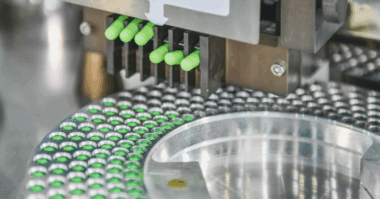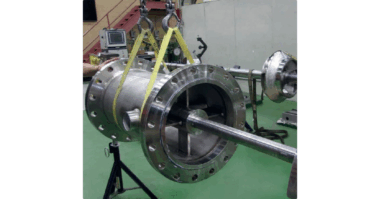Contributor: Dorota Zoldosova, Head of Marketing and Communications, Sulzer Chemtech Ltd.
Independence from petroleum-based plastics is becoming more achievable, as it develops into an issue of national importance…
The recent development of new polymerization methods that allow the economical production of poly lactic acid (PLA) with a higher molecular weight have effectively removed many of the limiting factors on its use, opening-up a greatly expanded application base for the plant-based bioplastic. This is happening just at a time when pressures on extended supply lines for crude oil derived products have increased in many highly industrialized countries due to stay-at-home policies for workers and tighter border controls.
Sulzer technology is included in almost all PLA plants worldwide, and while not an instant fix – the timing for Sulzer Chemtech to develop a flexible and robust technology to enable the production of various new PLA grades, could not be more prescient. The company has developed a turnkey process with partners to produce PLA from sugars via lactic acid followed by a downstream dimerization and ring opening polymerization process that has already been installed and is operating in six distinct production facilities worldwide.

Polylactic acid (PLA) is ideal for use in food packaging, medical plastic, and pharmaceutical applications.
(Image Source: Shutterstock – ulrich22)
Improved sustainability and lower energy usage have proved to be a strong driver for the use of PLA in plastic food containers, films, and wraps, whereas high biocompatibility has led to numerous biomedical applications. In the past however, the usage of PLA, or plant-based bioplastic was limited by its mechanical properties in production (technically its viscosity in the melt), and by the thermo-mechanical properties of the finished product. The new processes solve both these issues and as a result extend its economic use to a much wider spread of consumer goods and packaging applications.
Benefits such as its low toxicity, along with better sustainability as a result of using renewable resources as raw materials make the new grades of PLA an ideal material for the food packaging and consumer product industries. Due to a high level of robustness, biocompatibility and sterilization options they are also suitable for a number of medical applications such as implant devices, tissue scaffolds and internal sutures, plus a wide variety of other pharmaceutical devices and packaging applications.
Torsten Wintergerste, Division President from Sulzer Chemtech comments, “It’s evident that going forward nation states can’t operate on a business-as-usual basis. We need a domestic supply chain solution that is more reliant on national resources, with production facilities that are strategically located. When the in-feed materials are based on corn, or other domestically farmed sugars, for example local plants, can be built to produce sustainable plastics for making both essential medical supplies and food packaging by injection molding, 3D printing, film forming and extrusion. The latest grades of PLA are highly flexible and have a much wider scope of useable properties, making them ideal for all these plastics production methods.”
In the last few years great strides have been made with commercializing bio-based plastics produced from renewable sugars and starches. More efforts are needed to increase the use of biopolymers such as PLA in substitution of conventional fossil-based and non-biodegradable commodity polyolefins such as polyethylene (PE). PLA is biodegradable under certain conditions and many PLA-based film applications are proven to be industrially compostable according to the recognized standard EN 13432.
The ideal biodegradable polymer for use in medicine and pharmacy should also have certain key properties: it must not promote inflammation or cause toxic reactions; it has to be easy to sterilize and after serving its purpose, it needs to be possible to enzymatically biodegrade it using an appropriate metabolic pathway. PLA fulfils all these requirements and therefore is a natural choice for the applications described.
How the new grades of PLA are produced
PLA can be produced starting with hydrolyzed starch or sucrose transformed to lactic acid (2-hydroxy propionic acid) building blocks, which exist in optically active D- or L-enantiomers. Depending on the proportion of the enantiomers, PLA with different properties can be produced. This enables the development of multiple processing methods to produce a wide range of PLA grades with properties suitable to differing applications. The differences are based on molecular weight and content of D-lactic acid units. The molecular weight affects the rheological properties (viscosity in the melt), whereas the content of D-lactic acid units affects thermo-mechanical properties.
PLA with a high molecular weight is one of the main drivers for the economical production and consequent expanded use of this polymer. There are two methods to prepare PLA: the condensation of lactic acid and the ring opening polymerization of lactide, however the latter is the one preferred by Sulzer engineers as it provides improved control over quality and more flexibility in terms of the material properties of the end product.
Sulzer can design and execute whole projects, from the first concept to an industrial scale plant using in house engineering, equipment, assembly, commissioning, and start-up capabilities. This allows PLA producers to enter into the biopolymer market with the capacity to produce the new formulations at a customizable scale.
Torsten Wintergerste concludes, “In the short to medium term we need to break the dependency cycle on fossil fuels and promote the use of renewables, purely from a sustainability point of view. The current situation with regards Coronavirus however has created another immediate reason why the localization of production for essential materials such as plastics for the food and medical sectors is something that needs to be addressed on a national level, fortunately Sulzer is in a position to provide the answer.”
1 Pandemic shakes the suddenly atypical plastics sector, Recycling International, March 24, 2020.https://recyclinginternational.com/corona-virus/pandemic-shakes-the-suddenly-atypical-plastics-sector/29806/
About Sulzer
Sulzer is a global leader in fluid engineering. We specialize in pumping, agitation, mixing, separation and application technologies for fluids of all types. Our customers benefit from our commitment to innovation, performance and quality and from our responsive network of 180 world-class manufacturing facilities and service centers across the globe. Sulzer has been headquartered in Winterthur, Switzerland, since 1834. In 2019, our 16’500 employees delivered revenues of CHF 3.7 billion. Our shares are traded on the SIX Swiss Exchange (SIX: SUN).
The Chemtech division is the global market leader in innovative mass transfer, static mixing and polymer solutions for petrochemicals, refining, LNG, biopolymers and biofuels. Our product offering ranges from process components to complete separation process plants, including licensing. Customer support covers engineering services and field services to tray and packing installation, tower maintenance, welding and plant turnaround projects.




